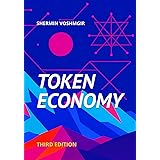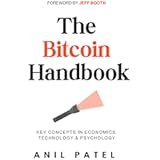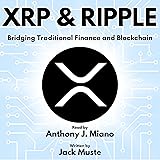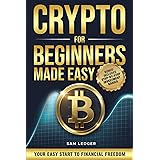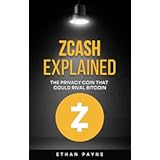In the fast-paced world of cryptocurrency, particularly within the volatile memecoin arena, an overwhelming majority of participants—approximately 99%—are reported to be losing money. This stark statistic often leaves aspiring traders feeling daunted, yet opportunities do exist for those equipped with the right knowledge and tools. As explored in the accompanying video featuring Cepryl, a seasoned expert on Crypto Banter, a fresh approach to memecoin trading, especially on the Solana blockchain, is being introduced for 2025. This guide aims to expand upon the insights shared, providing a foundational understanding for beginners seeking to navigate the “trenches” of degen trading more effectively.
Demystifying Memecoin Trading: Conviction Plays vs. Trench Trading
One of the most crucial distinctions to grasp in memecoin trading is the difference between a “conviction play” and “trench trading.” These two strategies demand entirely separate mindsets and approaches:
- Conviction Plays: These are considered longer-term investments. A trader identifies a memecoin with a strong narrative, a committed community, potential utility, or influential backing. The intent is to hold this asset for days, weeks, months, or even an entire market cycle, anticipating significant growth. Imagine finding a promising project early, believing in its long-term vision, and being prepared to weather market fluctuations for a potentially massive payoff. A thorough thesis and understanding of the project’s fundamentals, however limited for a memecoin, usually back these plays.
- Trench Trading: This strategy involves extremely short-term, high-frequency trades. As the video highlights, assets acquired in the trenches might be held for mere seconds or minutes. The goal is to capitalize on immediate price volatility, often driven by hype, sudden volume spikes, or early listing arbitrage. This type of trading is purely speculative and relies heavily on rapid scanning, quick decision-making, and immediate execution using specialized tools. It is acknowledged that 99% of projects in the trenches will likely go to zero, emphasizing the need for swift entries and exits.
The danger for many retail investors lies in mislabeling a trench trade as a conviction play. Without the ability to scan rapidly and exit positions almost instantly, holding a “trench” memecoin for too long typically results in substantial losses.
Leveraging Advanced Platforms for Solana Memecoin Scanning
For those venturing into trench trading, specialized platforms are considered indispensable. Axiom is presented as a primary tool for scanning new memecoin pairs on the Solana blockchain. These platforms are designed to give traders an edge by providing real-time data and rapid execution capabilities.
Essential Filters for Identifying New Pairs
When using a scanning platform like Axiom, applying the right filters can streamline the process of finding potentially profitable new memecoins. The following criteria are commonly employed:
- Maximum Age (H): This filter limits the display to very new pairs. A setting of 2-4 minutes is often used. If market volume is low, a slightly higher age might be considered; conversely, high volume may necessitate an even lower age. This ensures focus on fresh opportunities.
- Minimum Market Cap: Setting a floor, such as $6,000 or $20,000, can help exclude projects with insufficient initial liquidity or those that are clearly stagnant. While a low market cap doesn’t inherently signal a bad project, it can help organize the vast number of new listings.
- Bonding Curve Minimum: A 20% minimum bonding curve is sometimes applied. This refers to the mechanism by which tokens are distributed, and certain percentages are preferred for stability or fairness.
- Social Presence: This filter can be dynamic. While typically set to “at least one social” (e.g., Twitter, Telegram) to indicate community engagement, some traders opt for “no socials” on initial scans. This can catch “cabals” or early plays where social channels are established post-launch, potentially offering a very early entry point.
Analyzing Migrated Pairs
Migrated tokens, those moved from one contract to another, also require careful scrutiny. Specific filters are applied here to mitigate risk:
- Maximum Age: For migrated pairs, a longer age, such as 120 minutes, might be used, especially in slower markets.
- Sniper Percentage: A critical filter, typically set to “no more than 5% snipers.” Snipers are automated bots that buy huge amounts of supply immediately upon launch. If a significant portion of a token’s supply is held by snipers in a migrated project, there is a very high probability that these holders will “dump” their tokens, destroying the chart and investor value.
- Minimum Market Cap: For migrated tokens, a higher minimum market cap, like $30,000, is often set. If a migrated token falls below this threshold after an initial pump, it often indicates a “rug pull” or a project that has lost momentum and is unlikely to recover.
Deciphering Token Information for Risk Assessment
Beyond basic filters, detailed token information provides crucial clues about a memecoin’s legitimacy and potential for volatility. Axiom offers an overview that is often more comprehensive and accurate than other tools, making it easier to identify red flags.
- Top 10 Holders: If the top 10 holders account for more than 25-30% of the token supply, it is generally advised to stay away. Such a concentration suggests heavy insider control, meaning a few individuals could manipulate the price by selling their large holdings. Imagine investing in a stock where a small group of people could crash its value overnight – the risk is similar.
- Dev Holding: Ideally, the developer’s wallet should hold 0% of the token supply, especially for pure memecoins without utility. In many cases, developers immediately sell their allocated tokens. If a large percentage is held by the dev, the project might not gain traction, or the dev could perform a rug pull. Utility-driven projects are an exception, where a dev wallet might be used for ongoing development.
- Snipers: As mentioned, a high percentage of snipers (e.g., above 5%) is a significant warning. These automated buyers often front-run retail investors, accumulating tokens cheaply only to sell them quickly for profit, causing rapid price drops.
- LP Burned: For tokens launched through a reputable launchpad, the liquidity pool (LP) is typically burned. This is a positive sign, as it locks the liquidity, preventing developers from removing it (a common “rug pull” tactic). If LP is not burned, it’s a major red flag.
- Bundlers: This refers to entities using multi-wallets or specialized software to execute multiple buys simultaneously, accumulating a large portion of the supply. While difficult to detect perfectly even with advanced tools, a very high “Bundlers” percentage on a platform like Axiom can indicate manipulation and is often a reason to avoid.
Optimizing Trading Bot Presets for Rapid Execution
Success in trench memecoin trading also relies on efficient bot configurations. These presets dictate how quickly and at what cost a trade is executed. For most conviction plays, simpler presets without extreme speed are sufficient. However, for trench trading, speed is paramount.
- Slippage: This is the expected percentage difference between the quoted price and the executed price of a trade. For general trades, 10% slippage might be used. However, for “sniping” (attempting to buy extremely early), a higher slippage of 15-20% is often necessary to ensure the trade goes through, acknowledging that the price could move significantly during execution.
- Bribe Fee: On the Solana blockchain, a “bribe fee” (or priority fee) can be added to transactions. This small amount of SOL (e.g., 0.005 to 0.01 SOL, though it can vary based on network congestion) incentivizes validators to process the transaction faster, pushing it ahead of competitors. It’s a critical component for gaining an edge in highly competitive early buys.
- Priority: This setting directly relates to the bribe fee, indicating the importance of transaction speed on the Solana chain. For trench trading, high priority is always sought.
It must be understood that even with optimized presets, blindly following signals or trades from others can be detrimental. The speed at which these trades occur means that by the time a call is made public, the opportunity for retail investors is often gone, leaving them to buy at inflated prices.
Navigating the Risky Waters of Memecoin Trading
As candidly acknowledged, the vast majority of memecoins will inevitably trend to zero. This reality underscores the need for extreme caution and a clear strategy. While the allure of 100x gains is powerful, it is balanced by the near-certainty of loss without proper tools and understanding. The market’s current state, characterized by fear and greed indicators at low levels, often presents unique “trench” opportunities, but these are inherently more challenging to seize. The goal of mastering this new way of memecoin trading is not to eliminate risk entirely, but to approach it with a structured methodology, minimizing exposure to obvious scams and maximizing the chances of successful, albeit short-lived, trades.



